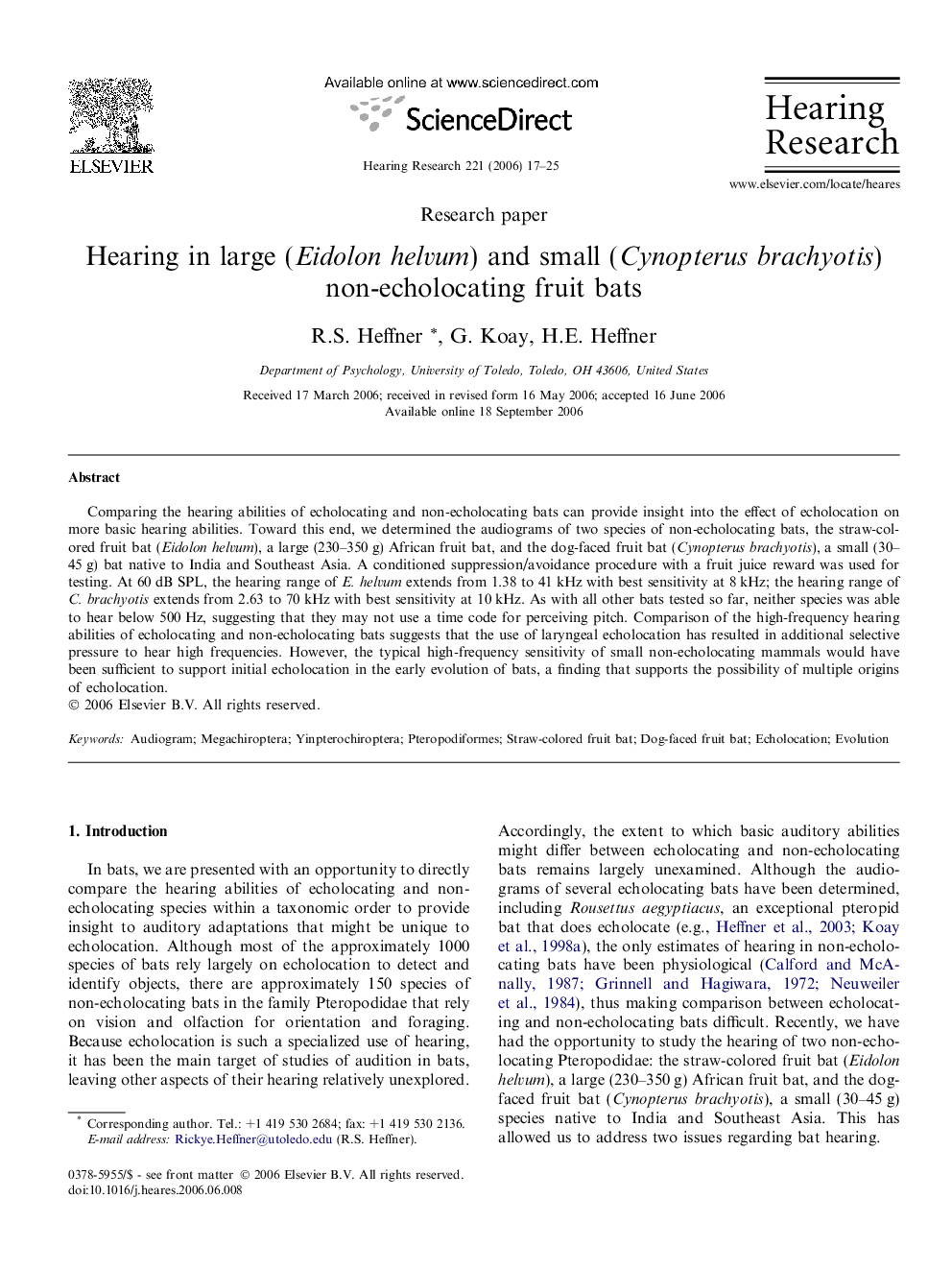| کد مقاله | کد نشریه | سال انتشار | مقاله انگلیسی | نسخه تمام متن |
|---|---|---|---|---|
| 4356296 | 1615678 | 2006 | 9 صفحه PDF | دانلود رایگان |
عنوان انگلیسی مقاله ISI
Hearing in large (Eidolon helvum) and small (Cynopterus brachyotis) non-echolocating fruit bats
دانلود مقاله + سفارش ترجمه
دانلود مقاله ISI انگلیسی
رایگان برای ایرانیان
موضوعات مرتبط
علوم زیستی و بیوفناوری
علم عصب شناسی
سیستم های حسی
پیش نمایش صفحه اول مقاله

چکیده انگلیسی
Comparing the hearing abilities of echolocating and non-echolocating bats can provide insight into the effect of echolocation on more basic hearing abilities. Toward this end, we determined the audiograms of two species of non-echolocating bats, the straw-colored fruit bat (Eidolon helvum), a large (230-350Â g) African fruit bat, and the dog-faced fruit bat (Cynopterus brachyotis), a small (30-45Â g) bat native to India and Southeast Asia. A conditioned suppression/avoidance procedure with a fruit juice reward was used for testing. At 60Â dB SPL, the hearing range of E. helvum extends from 1.38 to 41Â kHz with best sensitivity at 8Â kHz; the hearing range of C. brachyotis extends from 2.63 to 70Â kHz with best sensitivity at 10Â kHz. As with all other bats tested so far, neither species was able to hear below 500Â Hz, suggesting that they may not use a time code for perceiving pitch. Comparison of the high-frequency hearing abilities of echolocating and non-echolocating bats suggests that the use of laryngeal echolocation has resulted in additional selective pressure to hear high frequencies. However, the typical high-frequency sensitivity of small non-echolocating mammals would have been sufficient to support initial echolocation in the early evolution of bats, a finding that supports the possibility of multiple origins of echolocation.
ناشر
Database: Elsevier - ScienceDirect (ساینس دایرکت)
Journal: Hearing Research - Volume 221, Issues 1â2, November 2006, Pages 17-25
Journal: Hearing Research - Volume 221, Issues 1â2, November 2006, Pages 17-25
نویسندگان
R.S. Heffner, G. Koay, H.E. Heffner,